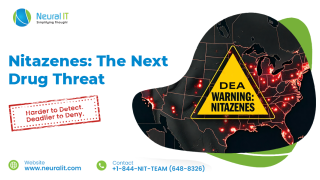Long Term Users Of Elmiron Unaware Of Eye Damage Risks
Long Term Users Of Elmiron Unaware Of Eye Damage Risks

Introduction
The growing number of Elmiron lawsuits indicate that several long term users are now learning that the interstitial cystitis drug may be the cause of vision loss and other similar symptoms they have been experiencing for years.
The drug has been on the market since the late 1990s, and it is the only drug approved to treat pain associated with diseases like interstitial cystitis, or IC - a condition that affects millions of people living in America every year. IC is more frequent in women, and many use Elmiron to treat the disease.
Thousands of people may have taken the drug and may have been exposed to the risk of potentially permanent or partial vision damage.
Prior to June 2020, Elmiron’s prescribing information provided by Janssen Pharmaceuticals listed the drug’s side effects and warnings but did not warn about the risks of maculopathy. A warning about retinal pigmentary damages is the current prescribing information.
Elmiron, also known by its generic name pentosan polysulfate sodium or PPS, is an oral prescription drug manufactured by Janssen Pharmaceuticals, a subsidiary of Johnson & Johnson, and is used to treat pain/discomfort caused by bladder disorder interstitial cystitis or IC.
Starting in 2018, studies began to reveal irreversible vision problems associated with the long-term use of Elmiron.
The macula is the backside of the retina. The retina senses light and transmits a signal to the brain, allowing people to see. So retina damage affects a person’s vision and further leads to loss of vision. Elmiron may cause damage to a part of the retina called the macula, causing vision difficulty. The kind of maculopathy associated with Elmiron is called pigmentary maculopathy. According to studies, this type of maculopathy is unique to Elmiron users.
The damage may stop after taking medication if caught in its early stages. But in the late stages, the disease can lead to permanent blindness. Common visual symptoms stated in studies were difficulty reading and difficulty adapting to dim lighting.
The drug marketed in the U.S. does not contain a warning label about the eye damage risks, whereas the manufacturer of the Canadian version added the information about the side effects last year. The warnings were added after a series of independent studies, and case reports indicated that the users might face a rare form of eye damage known as pigmentary maculopathy.
Elmiron, also known by its generic name pentosan polysulfate sodium or PPS, is an oral prescription drug manufactured by Janssen Pharmaceuticals, a subsidiary of Johnson & Johnson, and is used to treat pain/discomfort caused by bladder disorder interstitial cystitis or IC.
Starting in 2018, studies began to reveal irreversible vision problems associated with the long-term use of Elmiron.
The macula is the backside of the retina. The retina senses light and transmits a signal to the brain, allowing people to see. So retina damage affects a person’s vision and further leads to loss of vision. Elmiron may cause damage to a part of the retina called the macula, causing vision difficulty. The kind of maculopathy associated with Elmiron is called pigmentary maculopathy. According to studies, this type of maculopathy is unique to Elmiron users.
The damage may stop after taking medication if caught in its early stages. But in the late stages, the disease can lead to permanent blindness. Common visual symptoms stated in studies were difficulty reading and difficulty adapting to dim lighting.
The drug marketed in the U.S. does not contain a warning label about the eye damage risks, whereas the manufacturer of the Canadian version added the information about the side effects last year. The warnings were added after a series of independent studies, and case reports indicated that the users might face a rare form of eye damage known as pigmentary maculopathy.
Elmiron, also known by its generic name pentosan polysulfate sodium, or PPS, is an oral prescription drug that is used to treat pain/discomfort caused by bladder disorder interstitial cystitis, or IC.
The drug is manufactured by Janssen Pharmaceuticals, a subsidiary of Johnson & Johnson, and was approved by the U.S. Food & Drug Administration (FDA) in 1996. The drug is approved under the Orphan Drug Act or ODA, which gives special status and incentives to sponsors, or manufacturers, of medications that treat rare diseases.
Interstitial cystitis, a chronic, progressive, and debilitating urinary bladder disease has affected more than 1 million people in the United States, primarily women.
The bladder wall's protective lining is made of glycosaminoglycans, or GAG layer, composed of a coating of mucus, which protects the bladder wall from bacteria and irritating substances in the urine. The lining is damaged in people with IC, due to which the irritants from the urine cause inflammation in the bladder wall.
Researchers are not sure how the drug works but believe that it works by forming a synthetic GAG layer on the bladder wall and protecting it from harmful/irritating substances present in the urine.
Several studies and a growing number of lawsuits filed in recent years claimed that long-term exposure to Elmiron has serious eye-related side effects and causes maculopathy, an eye disorder affecting the macula, central part of the retina, which is a major cause of blindness. Many experts have referred to the retinal disease as “Elmiron maculopathy” or “PPS maculopathy.” It is also a weak blood thinner and, therefore, may increase the risk of bruising/bleeding.
Medical practitioners in the U.S. recently started learning about the link through medical literature, but the warning label in the state still contains no mention of maculopathy or vision problems.
Due to the failure to disclose the safety warning, the number of lawsuits being filed throughout the U.S. is growing day by day, leading to a shocking reaction from long-term users who have been dealing with vision problems and were unaware of the link.




